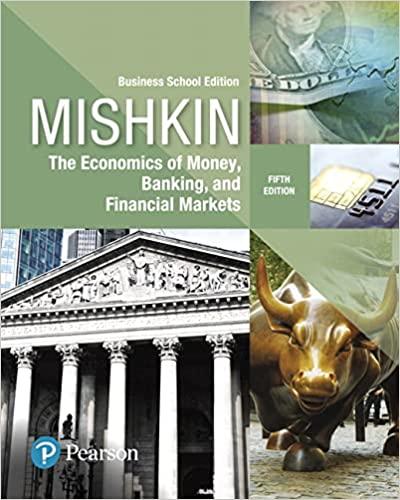Answered step by step
Verified Expert Solution
Question
1 Approved Answer
1. Please consider the following statement -- Suppose we use the sample average of observed log-returns to estimate the mean log-return for a portfolio. We
 1. Please consider the following statement -- "Suppose we use the sample average of observed log-returns to estimate the mean log-return for a portfolio. We know that the observed sample average will almost certainly differ from the true mean return, but a confidence interval based on the sample average has some positive probability of including the true mean return." Do you agree with this statement? Please explain your response. 2. Suppose you manage a portfolio and you want to show that your mean portfolio return exceeds the benchmark return. You conduct a hypotheis test for which the null hypothesis states that the portfolio and benchmark returns are equal, and you hope to reject this null hypothesis. Would you prefer to conduct this test at the 5% or 10% Type I error rate? Please explain your response. 3. Problem 8.3 (page 427) presents the output from a linear regression model in which the logarithm of the number of analysts following a company is a function of the firm's debt-to-equity ratio and the logarithm of firm size. One implication of the regression output is that the number of analysts following a company is expected to increase by 0.32% if the firm size increases by 1%. Does this positive relationship make sense to you? Suppose a firm buys out a smaller rival and increases its size by 30%. If 100 analysts followed the company before the buy-out, what is the expected number of analysts following the company after the buy-out? Please explain your responses. 4. Following the discussion of the information ratio from Chapter 12, suppose you manage a portfolio and your average return equals the benchmark return. What is the value of the information ratio in this case? Suppose you manage a second portfolio that has an average return that always exceeds the benchmark return, but the tracking risk is expected to decrease in 2024 due to an improved inflation outlook. What will happen to the information ratio in the coming year? Please explain your responses
1. Please consider the following statement -- "Suppose we use the sample average of observed log-returns to estimate the mean log-return for a portfolio. We know that the observed sample average will almost certainly differ from the true mean return, but a confidence interval based on the sample average has some positive probability of including the true mean return." Do you agree with this statement? Please explain your response. 2. Suppose you manage a portfolio and you want to show that your mean portfolio return exceeds the benchmark return. You conduct a hypotheis test for which the null hypothesis states that the portfolio and benchmark returns are equal, and you hope to reject this null hypothesis. Would you prefer to conduct this test at the 5% or 10% Type I error rate? Please explain your response. 3. Problem 8.3 (page 427) presents the output from a linear regression model in which the logarithm of the number of analysts following a company is a function of the firm's debt-to-equity ratio and the logarithm of firm size. One implication of the regression output is that the number of analysts following a company is expected to increase by 0.32% if the firm size increases by 1%. Does this positive relationship make sense to you? Suppose a firm buys out a smaller rival and increases its size by 30%. If 100 analysts followed the company before the buy-out, what is the expected number of analysts following the company after the buy-out? Please explain your responses. 4. Following the discussion of the information ratio from Chapter 12, suppose you manage a portfolio and your average return equals the benchmark return. What is the value of the information ratio in this case? Suppose you manage a second portfolio that has an average return that always exceeds the benchmark return, but the tracking risk is expected to decrease in 2024 due to an improved inflation outlook. What will happen to the information ratio in the coming year? Please explain your responses Step by Step Solution
There are 3 Steps involved in it
Step: 1

Get Instant Access to Expert-Tailored Solutions
See step-by-step solutions with expert insights and AI powered tools for academic success
Step: 2

Step: 3

Ace Your Homework with AI
Get the answers you need in no time with our AI-driven, step-by-step assistance
Get Started


